Quick Menu
The following article by Adam Meckel was originally published on his website Backcountry China. Meckel is a guide at KTL Adventures and an avid outdoorsman. GoKunming would like to thank him for granting us the right to republish his guide.
Deep sandstone canyons flanked by towering multi-colored walls and spires, spectacular views from the canyon rim and a vast network of trails tying it all together...
For all it has to offer, the little town of Liming (黎明乡) doesn't get much attention from backpackers and trekkers. Nearby Tiger Leaping Gorge (虎跳峡) takes the spotlight, and no wonder. It's a well-marked and well-worn path with unforgettable scenery. But if you like to get off the beaten path and find your own way through a stunning backcountry landscape, then Liming deserves your attention.

Liming versus Tiger Leaping Gorge
While the snow-capped peaks of 5,500-meter Jade Dragon Snow Mountain (玉龙雪山) soaring high above the gorge's raging Jinsha River (金沙江) are a breathtaking reminder that you're on the doorstep of the Himalayas, the red and black sandstone walls of Liming's rugged maze are no less awesome.
The canyons make Liming a major attraction for large domestic tour groups from Lijiang (丽江). It's also becoming a world-class rock climbing destination, with sandstone walls and 'splitter' cracks similar to those at America's Indian Creek and Zion National Park.
Tiger Leaping Gorge is perfect for short, accessible two- or three-day treks on well-established routes, with plenty of guesthouses along the way. Liming, on the other hand, is a small village at the center of a network of unmarked trails designed more for, and by, goats than people. That could change if a proposal to build an official trail system, submitted in May, 2019, is approved. For now though, hiking around Liming poses a much greater challenge than Tiger Leaping Gorge, and comes with the added bonus of so many thought-provoking Chinglish signs trying to keep you on course.

Laojunshan National Park
The town of Liming sits just inside the main entrance to Laojunshan National Park (老君山国家公园) — and is included in the Three Parallel Rivers World Heritage site for its high levels of biodiversity. Laojunshan is one of several protected areas in Yunnan established under China's national parks pilot project that began in 2008 in partnership with The Nature Conservancy.
But after more than ten years of growing pains, China's so-called national parks are still managed by a mashup of local, provincial and national agencies. Like the national parks system in the United States began, Liming's development has so far been focused on mass tourism — electric shuttle busses, a cable car, boardwalks, and a cluster of high-end eco tent lodges catering mostly to busloads of tourists and wealthy travelers.
Similar plans were in store for the park's other famous scenic spot, 99 Dragon Pools (九十九龙潭) — a small alpine basin dotted with lakes and rhododendron forests. That is, until the Yulong County Environment Bureau drew an 'ecological red line' in the sand in early 2019. Since then, development plans are on hold and 99 Dragon Pools is closed to the public while the powers that be work out how to proceed under the new rules.
Meanwhile, in Liju Village (利苴村) — a less developed area of the park south of Liming — The Nature Conservancy and various local and national NGOs have tried to steer Laojunshan's development in a more sustainable direction. Liju is near the core protected zone of the park and its poster-child inhabitants, Yunnan snub-nosed monkeys.
In contrast to the traditional tourism experience of Liming, and thanks to dedicated conservation and ecotourism professionals, Liju is becoming a base for environmental research and education, conservation and ecotourism. Two separate ranger patrol teams are based there to study and protect the critically endangered primates and their habitat.

Liming's geology, people and fauna
The colorful sandstone canyons and spires that have made Liming famous are the result of 80 million years of sedimentation, uplift and erosion. The resulting Danxia landform isn't unique to Liming but is found only in China.
Of the 13,000 people living within the park's boundaries, those of the Lisu ethnicity make up the majority. Other park residents include the Bai, Pumi, Yi and Han. Famous for their hunting skills — their symbol is a crossbow — most of the Lisu in and around Liming are now subsistence farmers. Thus, villages and farmsteads occupy the hills surrounding the town of Liming. Locals still gather plants for daily use and to supplement their incomes, while hunting is common deep in the backcountry, despite a nation-wide ban.
If you venture onto the trails you'll probably run into people herding livestock, gathering firewood or plants or working remote little fields. Most are friendly and graciously open to having their pictures taken, if asked politely. Besides local dialects, most people speak at least a little Mandarin.

Most of Liming's wild animals were displaced long ago by local hunters, subsistence farmers and their livestock. Although far less developed than Tiger Leaping Gorge, this part of the park isn't the place to try spotting wildlife. You'll need to access Laojunshan's deep backcountry if you have any hope of seeing even the slightest sign of resident mammals other than squirrels and tree shrews. That said, good birding can be had on the boardwalk to Thousand Tortoise Mountain or any one of the many side canyons branching out from Liming.
The town itself is centrally located on a small river at the intersection of two main tributaries, with a paved road passing the park entrance just north of town, where it soon forks. The left fork crosses the river and heads east up a valley, eventually becoming a rough dirt road through a narrow gorge before ending in a scattering of farmhouses below the edge of the plateau. A few kilometers south of Liming, another road branches off to the east and winds up yet another canyon. Along the roads, trails lead up many of the side canyons, most going straight up to the rim.

Hiking options
The backcountry around Liming isn't very remote but it is rugged enough to easily turn a day hike into an adventure. Other than two boardwalk trails, there aren't any well-marked hiking routes. There are a couple of roads marked as trails on maps, but things aren't so clear on the ground.
If you're not used to navigating in the backcountry without trail signs or a map, it's best to find a guide in Liming or stick to the boardwalks and roads. It's easy to get turned around or cliffed-out, and you're unlikely to see other hikers. Even locals are few and far between. Hiring a guide comes with the added benefit of giving you a more intimate view of local culture than what you'd experience on your own. This also helps support a less environmentally impactful form of development than what's currently happening in Liming.
But if you're an experienced backcountry traveler who's up for a little route-finding and solitude, then Liming is your playground. I won't give specific directions but I will point out a couple routes on the map. Ignore that if you like to figure things out on your own. Liming's landscape is similar to any other dominated by deep, vertical-walled canyons. Trails lead from the valley floor, up the bottom of the canyons and onto the rim.
In that sense, route-finding is pretty straight-forward. Plus, the land is so thoroughly grazed by sheep and goats that you can find a trail going pretty much anywhere you want. At the same time, with so many unmarked trails intersecting, it's easy to forget which way you came. And since most are essentially goat trails, they can suddenly get steep and narrow enough to make even a seasoned hiker weak in the knees.
Local herders have attached log ramps to some slick-rock sections that are too steep to walk. I don't recommend pushing your luck on these makeshift walkways. Once on the rim, the options really open up, along with the views. This is my favorite thing about hiking here — being spoiled for choice regarding both routes and scenery.
Since going down any of the canyons will ultimately land you on one of the main roads back to Liming, it's possible to make a loop if you have enough daylight left. But remember to be prepared to backtrack in case it gets too sketchy.
Just because there's a gentle-looking trail leading down into the canyon doesn't mean it doesn't eventually become an eight-inch wide goat path above a 100-meter drop. Whatever you decide to do, take time to bask in the sun — unless its the rainy season — and picnic on slick-rock ledges while photographing some of the best scenery China has to offer.

Non-hiking activities
On down days, you can tour the park on an electric open air minibus, go horseback riding, or take the cable car or boardwalk to the top of the park's centerpiece landmark — Thousand Tortoise Mountain. The name comes from a particularly well-formed part of the Danxia landform that looks like a thousand tortoise shells spilling down from the summit.
Liming's canyon walls offer over 200 routes of world-class crack climbing, some up to 200-meters long. For the most part, this is not a sport climbing area and only a handful of routes are graded below 5.10. You'll need to be well-equipped and adept in the art of trad climbing to enjoy most of what Liming has to offer. Some sport route development has taken place recently in Liming, however. But Shigu, about halfway between Liming and Lijiang, is the place to go if you're just wanting to clip bolts.
Via ferrata
If you hadn't planned to rock climb but still want a taste of the vertical, you have your choice of two via ferrata routes, the longer of which ends with a spectacular view from the canyon rim and the top of the Anqini Trail boardwalk. Inquire at the visitor center near the park entrance for directions.
Birding
As mentioned, good, easily accessible birding can be done on the boardwalk trail to Thousand Tortoise Mountain. You might also find good locations on the one kilometer of trail following the river from the south end of town to the start of the Anqini Trail. About a kilometer past there, a road takes off to the left, crossing the river and heading up a nice side canyon. This should also yield some good bird sightings.

Logistics, tips and other considerations
Transportation
Liming is a gateway to the heart of Laojunshan, with it's deep gorges and high alpine lakes. It's possible to access remote wilderness on foot from Liming, but Liju is a better starting point from the south. Public buses depart Lijiang regularly throughout the day for Liming. You might need to get on a different bus in Zhongxing (中兴), about 20 kilometers northeast of Liming. Follow this link to the Mountain Project website for specifics.
Lodging
Several guesthouses line Red Rock Street — the main road through Liming. The funky Faraway Inn (千里之外客栈) is a good budget stay popular with climbers and backpackers. A couple more upscale options are close-by. Fortunately, most of the big tour groups return to Lijiang or continue on at the end of the day, so the town never stays too crowded.
Camping
The only official campground in the Liming area is at the eco lodge/tent resort near the start of the Anqini Trail and via ferrata routes, about one kilometer upstream — south — from town. The 'campground' is just two large tent platforms and an outhouse. You'll find it to the left of the stairs as you approach the start of the trail. I'm not sure if any fees or permits are required for camping.
Food and supplies
Restaurants and convenience stores can be found on Liming's main street offering standard fair. One of the better restaurants is north of Faraway Inn, on the southeast corner of the main intersection. There, they have full-sized tables and chairs and a decent view from the dining room overlooking the river. A small cell phone shop is across the street and has SD memory cards in case you underestimated the number of pictures you'd take.

Fees
Like at most scenic areas in China, the entrance fee is steep, 100 yuan per adult. Dirtbag pro tip — you can avoid this cost by arriving in Liming between business hours when the ticket booth is closed.
Weather
The best times to hike Liming are mid-October to mid-November and April to June. Winter is also good with daytime temps warm enough for t-shirts. Sub-freezing nights are usual in January and February. And remember, there's a reason many locals wear soccer cleats on the trails in summer — frequent rains turn the hard-packed clay into Slip-and-Slides.
Safety
None of Liming's canyons are very remote but it's challenging terrain. No backcountry rangers or search and rescue personnel are stationed in Liming and cell reception in the canyons is spotty at best. GPS signals can be unreliable.
As long as you pay close attention to the direction you're heading and your surroundings, carry plenty of water, and you're not too proud to chicken-out, you should be fine. Also be prepared to fend off packs of dogs near villages and in the backcountry. A well-aimed rock or two is all you need for self-defense. Sometimes even a bluff will do the trick. I highly recommended a rabies vaccine if you plan to visit rural areas in China.
All images: Adam Meckel
© Copyright 2005-2025 GoKunming.com all rights reserved. This material may not be republished, rewritten or redistributed without permission.

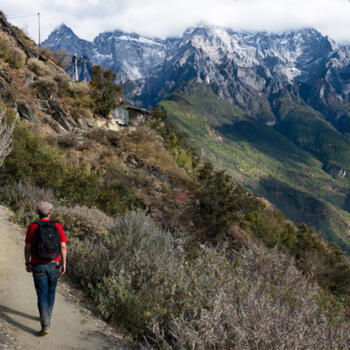

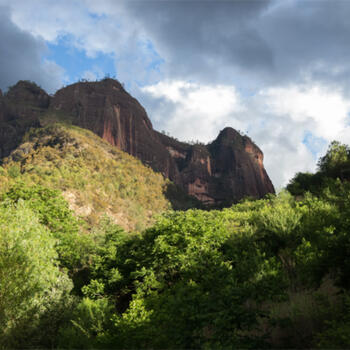
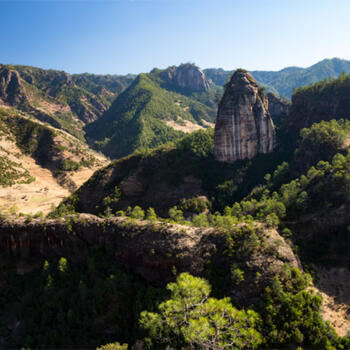
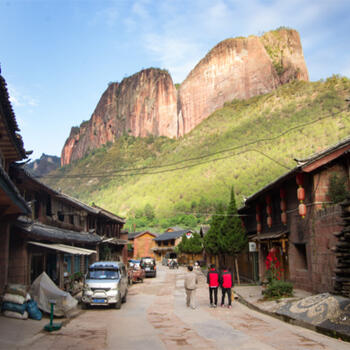
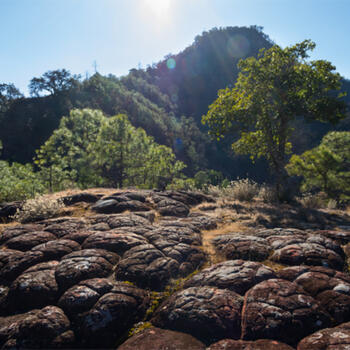
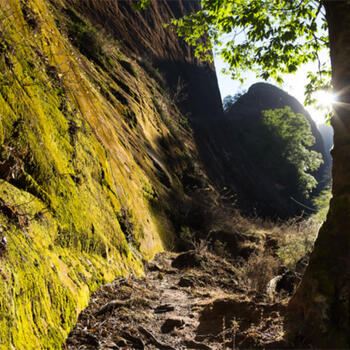

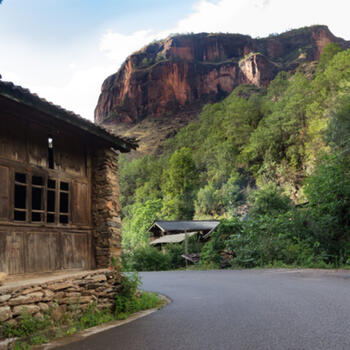

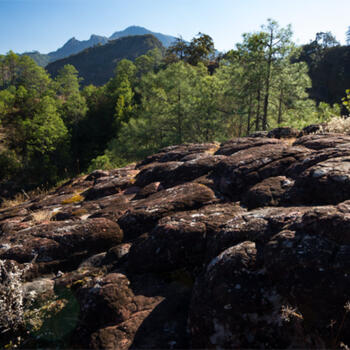

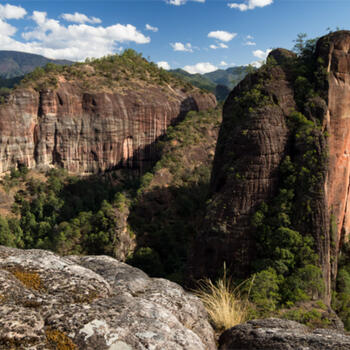
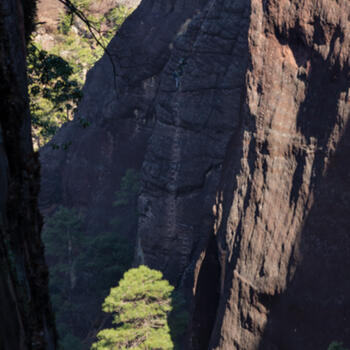











Comments
Sounds absolutely wonderful. Now if they don't go & overdevelop it for tourism...
The town is one street if I remember right. Hopefully it stays like that.
Liming seems beautiful. Will visit one day!
Login to comment